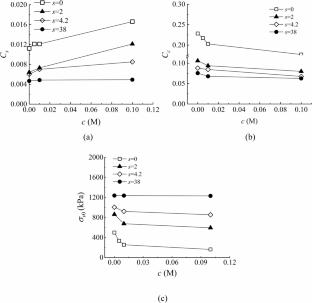Volume change behaviour and microstructural evolution of unsaturated Cr(VI) contaminated red clay under coupled chemo-hydro-mechanical conditions
Abstract
Field investigations reveal that shallow clayey soils in heavy metal-contaminated sites often remain in a long-term unsaturated state, experiencing coupled chemo-hydro-mechanical effects. In this study, a series of suction-controlled oedometer tests and microstructural analyses were respectively performed on Cr(VI)-contaminated red clay collected from an abandoned chromite slag disposal site, in order to systematically study the mechanical behaviours of unsaturated contaminated soils. Results indicated that the volumetric behaviour of red clay was synergistically governed by Cr(VI) concentration and suction, with suction variations exerting more pronounced effects on soil compression and swelling/shrinkage deformations than chemical contaminants. Microstructural characterization revealed a dual-porosity system dominated by micropores in the unsaturated red clay. The volume change mechanism induced by heavy metal infiltration was further elucidated through clay particle fabric analysis. Notably, chemical softening phenomena were identified in contaminated specimens. A yield surface equation incorporating chemical softening effects was developed to characterize the mechanical response of unsaturated contaminated red clay under chemo-hydro-mechanical coupling. Validation demonstrated that the proposed model was able to effectively capture the yield characteristics of red clay in the p0 ~ s ~ c plane.


 求助内容:
求助内容: 应助结果提醒方式:
应助结果提醒方式:


